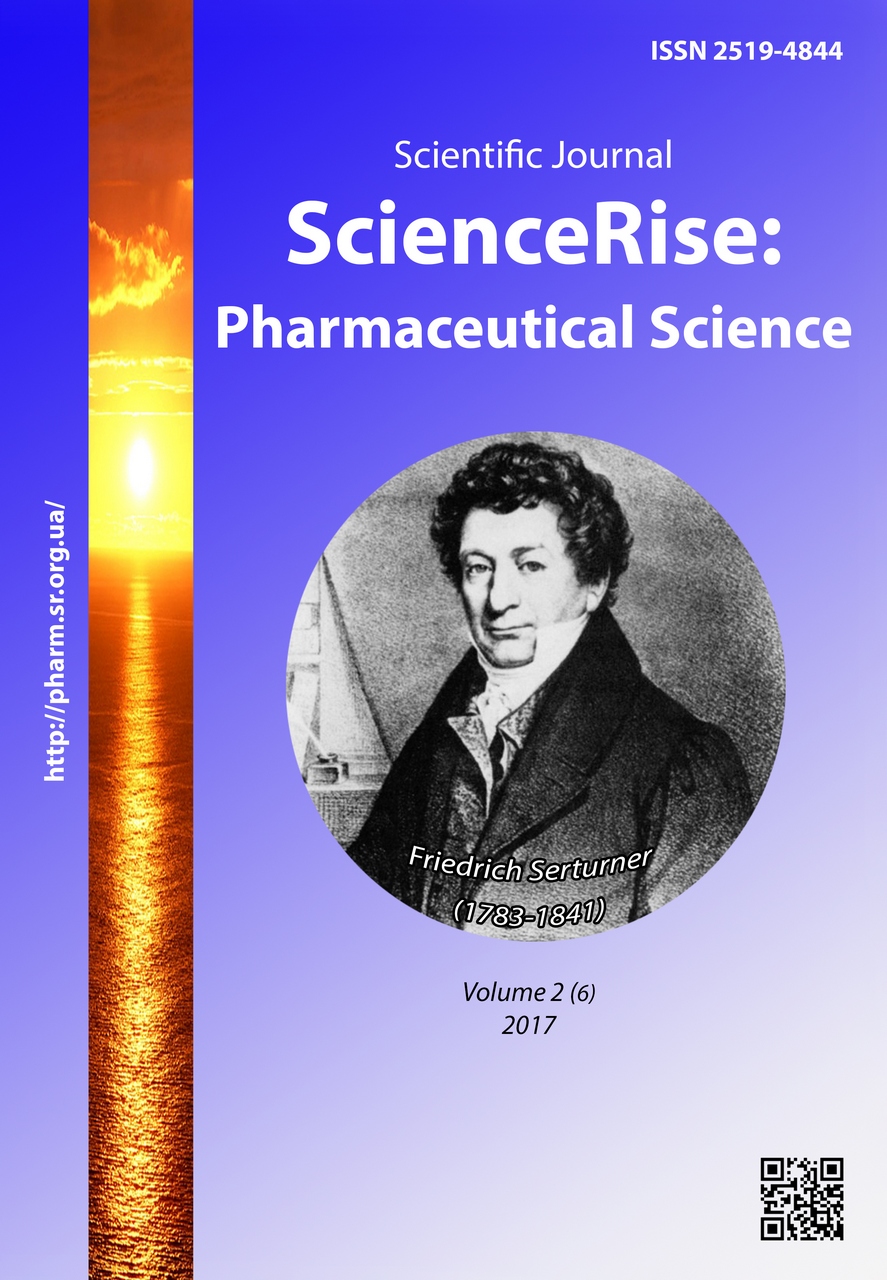Development of technology of the soft medicinal form based on the extract of common hazel leaves
DOI:
https://doi.org/10.15587/2519-4852.2017.100015Keywords:
Hazel extract, composition, technology, emulsion, ointment, emulsification, dispersion degree, stability, physical and chemical methodsAbstract
Vascular diseases occupy an important place in the morbidity structure of the population of Azerbaijan. Varicose veins is the most spread pathology among them; it affects between 25% and 50% of the adult population of the country.
The aim of the study was development of technology of the ointment containing Hazel thick extract.
Methods. Physical and chemical methods were used for dispersion, density, emulsification rate, spreadability, and emulsion concentration determination.
Results. The emulsifier concentration of 10% was selected in result of physical and chemical analysis. The oil phase dispersion degree depending on the № 1 emulsifier amount was shown using microscopy method. Thermal and colloidal stability of the ointment samples, as well as their spreadability was determined. It was found that the samples 3 and 4 are characterized by satisfactory spreadability indexes – 350 mm2, that is significantly differs from the samples № 1 (1005 mm2) and № 2 (852 mm2). Decrease in the emulsifier concentration below 10% leads to the emulsion instability. On the basis of the research results, rational emulsification conditions were selected. According to the microscopy analysis data and calculation of the emulsion concentration mixing time interval at 1500 rpm was investigated.
Conclusion. The given research allowed developing of the composition and technology of the ointment containing common Hazel extractReferences
- Van den Bos, R., Arends, L., Kockaert, M., Neumann, M., Nijsten, T. (2009). Endovenous therapies of lower extremity varicosities: A meta-analysis. Journal of Vascular Surgery, 49 (1), 230–239. doi: 10.1016/j.jvs.2008.06.030
- Naumenko, E. V., Khadartsev, A. A. (Eds.) (2013). Prevention and detection of varicose veins of lower limbs in athletes. Tula: OOO "Tula Polygraphist", 158.
- Okley, D. V. (2015). Systemic phlebotropic drugs in pharmacotherapy of chronic venous insufficiency of the lower extremities. News of Pharmacy, 4, 74–77.
- Gohel, M., Davies, A. (2009). Pharmacological Agents in the Treatment of Venous Disease: An Update of the Available Evidence. Current Vascular Pharmacology, 7 (3), 303–308. doi: 10.2174/157016109788340758
- Varchenko, V., Margitich, V. (2002). The review of the pharmaceutical market of the CIS countries. Pharmacy, 13 (334). Available at: http://www.apteka.ua/article/33198
- Movsumov, I. S., Yusifova, D. Yu., Garayev, E. A. (2013). Biologically active substances Corylus avellana L., growing in Azerbaijan. Chemistry of plant raw materials, 4, 259–261. doi: 10.14258/jcprm.1304259
- Yusifova, D. Yu., Movsumov, I. S., Maloshtan, L. N., Shatalova, O. M. (2015). Antiinflammatory activity and vasoconstrictive properties of the purified extract from the leaves of the common hazelnut growing in Azerbaijan. Azerbaijan Medical Journal, 3, 93–97.
- Emulsions: obtaining, properties, destruction (2012). Samara, 18.
- Karyachenko, A. A., Manzhos, Yu. V., Galiakberova, F. N. (2012). Effect of emulsifier content on the average emulsion particle size and emulsification time. Naukovi praci DonNTU. Seriya: «Girny`cho-geologichna», 2 (17), 65–70.
- Markov, V. V., Kiseleva, E. V. (2009). Influence of the method of mixing technological fluids on their structure. Bulletin of ISEU, 3, 38–40.
Downloads
Published
How to Cite
Issue
Section
License
Copyright (c) 2017 Jamilya Yusif Yusifova, Olena Ruban

This work is licensed under a Creative Commons Attribution 4.0 International License.
Our journal abides by the Creative Commons CC BY copyright rights and permissions for open access journals.








